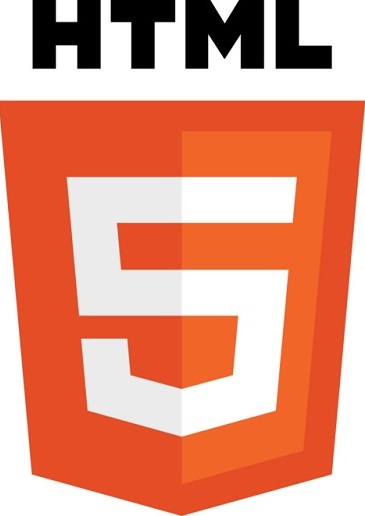HTML stands for Hyper Text Markup Language
HTML is the standard markup language for Web pages
HTML elements are the building blocks of HTML pages
HTML elements are represented by <> tags
HTML Elements
An HTML element is a start tag and an end tag with content in between:
<h1>This is a Heading</h1>
| Start tag | Element content | End tag |
|---|---|---|
| <h1> | This is a Heading | </h1> |
| <p> | This is paragraph. | </p> |
HTML Attributes
- HTML elements can have attributes
- Attributes provide additional information about the element
- Attributes come in name/value pairs like charset="utf-8"
A Simple HTML Document
<!DOCTYPE html>
<html lang="en">
<meta charset="utf-8">
<title>Page Title</title>
<body>
<h1>This is a Heading</h1>
<p>This is a paragraph.</p>
<p>This is another paragraph.</p>
</body>
</html>Example Explained
HTML elements are the building blocks of HTML pages.
- The
<!DOCTYPE html>declaration defines this document to be HTML5 - The
<html>element is the root element of an HTML page - The
langattribute defines the language of the document - The
<meta>element contains meta information about the document - The
charsetattribute defines the character set used in the document - The
<title>element specifies a title for the document - The
<body>element contains the visible page content - The
<h1>element defines a large heading - The
<p>element defines a paragraph
HTML Documents
All HTML documents must start with a document type declaration: <!DOCTYPE html>.
The HTML document itself begins with <html> and ends with </html>.
The visible part of the HTML document is between <body> and </body>.
HTML Document Structure
Below is a visualization of an HTML document (an HTML Page):
Note: Only the content inside the <body> section (the white area above) is displayed in a browser.
HTML Headings
HTML headings are defined with <h1> to <h6> tags.
<h1> defines the most important heading. <h6> defines the least important heading:
Example
<h1>This is heading 1</h1>
<h2>This is heading 2</h2>
<h3>This is heading 3</h3>HTML Paragraphs
HTML paragraphs are defined with <p> tags:
Example
<p>This is a paragraph.</p>
<p>This is another paragraph.</p>HTML Links
HTML links are defined with <a> tags:
Example
<a href="https://www.w3schools.com">This is a link</a>The link's destination is specified in the href attribute.
HTML Images
HTML images are defined with <img> tags.
The source file (src), alternative text (alt), width, and height are provided as attributes:
Example
<img src="img_w3schools.jpg" alt="W3Schools" style="width:120px;height:150px"HTML Buttons
HTML buttons are defined with <button> tags:
Example
<button>Click me</button>HTML Lists
HTML lists are defined with <ul> (unordered/bullet list) or <ol> (ordered/numbered list) tags, followed by <li> tags (list items):
Example
<ul>
<li>Coffee</li>
<li>Tea</li>
<li>Milk</li>
</ul>HTML Tables
An HTML table is defined with a <table> tag.
Table rows are defined with <tr> tags.
Table headers are defined with <th> tags. (bold and centered by default).
Table cells (data) are defined with <td> tags.
Example
<table>
<tr>
<th>Firstname</th>
<th>Lastname</th>
<th>Age</th>
</tr>
<tr>
<td>Jill</td>
<td>Smith</td>
<td>50</td>
</tr>
<tr>
<td>Eve</td>
<td>Jackson</td>
<td>94</td>
</tr>
</table> 





0 Comments